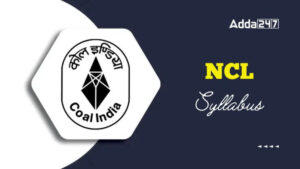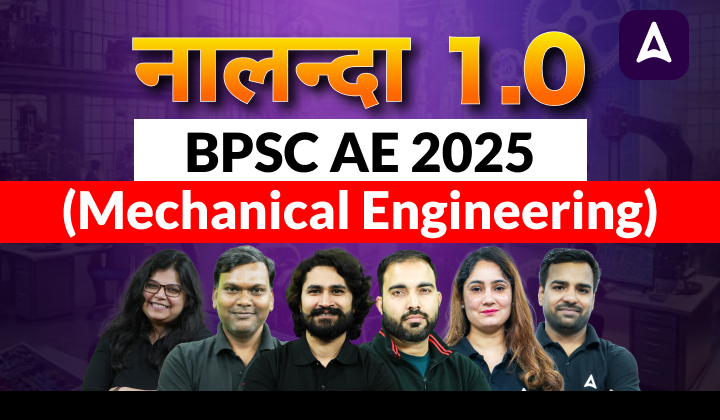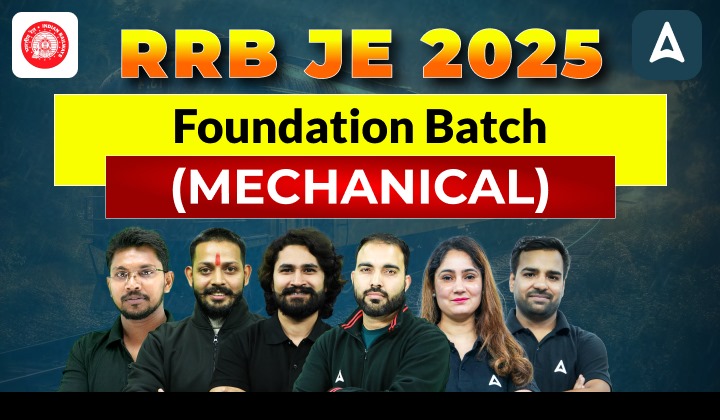Table of Contents
NTPC Limited has released a notification for the 20 Posts of Assistant Officer on its official website @ntpc.co.in. The aspirants who are willing to be selected for the NTPC Vacancy should go through the NTPC Syllabus 2024 thoroughly. This article consists of a detailed NTPC Assistant Officer Syllabus 2024 and NTPC Assistant Officer Exam Pattern 2024 encompassing post-wise syllabus and exam pattern. Read the full article carefully for all the details about NTPC Syllabus 2024 & bookmark this website for further Engineering Job Updates.
| NTPC Assistant Officer Syllabus 2024 | |
| Organization | NTPC Limited |
| Name of Posts | Assistant Officer |
| Number of Vacancies | 20 |
| NTPC Assistant Officer Exam Date | Update Soon |
| NTPC Assistant Officer Syllabus | Available Here |
| Selection Process | Written Exam and Interview |
| Official Website | ntpc.co.in |
NTPC Assistant Officer Exam Pattern 2024
The NTPC Limited will host a paper for selecting the eligible candidates as Assistant Officers. The important points related to the NTPC Assistant Officer Exam Pattern 2024 are given below:
The NTPC Assistant Officer Exam will be held on the same day for paper.
There will be a total of 120 questions for 1 mark each in the NTPC Paper.
A time duration of 2 Hours will be given to solve the questions in Paper 1 respectively.
| NTPC Assistant Officer Exam Pattern 2024 | |||
| Name of the Subject | No. of Questions | Maximum Marks | Time Duration |
| Subject Knowledge | 70 | 70 | 2 Hours |
| Aptitude | 50 | 50 | |
NTPC Assistant Officer Syllabus 2024 Detailed
For the 20 vacancies at NTPC Limited, a written test will be conducted to shortlist candidates. A crucial initial step towards excelling in any exam is a thorough understanding of its syllabus. To aid candidates in this endeavor, here is an in-depth NTPC Assistant Officer Syllabus 2024 for comprehensive preparation.
Syllabus For Occupational Health
- Physical Health Hazards
- Chemical Health Hazards and Their Prevention and Control
- Psychological Hazards
- Cumulative Trauma Disorders and Application of Ergonomics in Industry
- Occupational Diseases
Syllabus For Industrial Safety
- Accidents and Prevention
- Hazard Identification, Prevention, and Control Techniques for Identification of Hazards
- Behavior-Based Safety
- Work Permit System
Syllabus For Occupational Safety And Health Legislations
- ILO Conventions and Recommendations
- National Policy on Occupational Safety Health and Environment at Workplace
- The Factories Act, of 1948
- The Dockworkers Act, 1986, and The Dockworkers Regulations, 1990
- Air (Prevention & Control of Pollution) Act, 1981 and Amended, 1986
- Water (Prevention & Control of Pollution) Act, 1974 and Rules
- Workmen’s Compensation Acts, 1923
- The Mines Act, 1952 and Rules
- The Employee’s State Insurance Act, 1948
- Manufacture Storage and Import of Hazardous Chemical Rules, 1989
- OHSAS, 18001
Syllabus For Industrial Hygiene
- Industrial Hygiene –TLV Place Monitoring Concept and Work
- Assessment of Airborne Contaminants in The Work Environment
- Biological Monitoring
- Industrial Ventilation
- Personal Protective Equipment (PPEs)
- Heat Stress
Syllabus For Staff Training & Productivity
- Health of Executives
- Role of Factory Medical Officers in Promotion of Health Education and Training for Prevention of Occupational Health Problems in Industry
- Identification of Health Training Needs Designing and Organizing Training Programs
- Training Techniques
- Communication and Training
- Concept and Measurements of Productivity
- Total Quality Management
- Kaizen- Concept and Philosophy
- Principles of Healthcare Management
Syllabus For Miscellaneous
- Women at Work
- Basic Types of Inventory Control Systems
- Organization & Function of Occupational Health Services
- Emergency Medical Responses – Medical Organization for Major Accident Hazard Control
- Evaluations of Industrial Injuries
- Industrial Medicine Service
- Toxicity of Some Pesticides and General Precaution
Syllabus For Aptitude
- Verbal Ability
- Numerical Ability/Quantitative Aptitude &
- Logical Reasoning
Syllabus For Mathematics Foundation
- Linear Algebra: Determinants and matrices, Systems of linear equations, Eigenvalues, and eigenvectors.
- Calculus: Functions, Limit, Continuity, Differentiability, Local maxima and minima, Taylor series, Tests for convergence, Definite and indefinite integrals, Application of definite integral to obtain area and volume, Partial and total derivatives.
- Differential Equations: Linear and non-linear first-order ordinary differential equations (ODE), Higher order linear ODEs with constant coefficients, Cauchy’s and Euler’s equations, Laplace transform and its application in solving linear ODEs.
- Probability and Statistics: Descriptive statistics, Measurement of central tendency, Dispersion, Skewness and kurtosis, Probability concepts, Conditional probability, Bayes theorem, Risk and reliability, Probability distributions, Correlation, Single and multiple regression models, Hypothesis testing (t-test, F-test, chi-square test).
Syllabus For Environmental Chemistry
- Fundamentals of Environmental Chemistry: Covalent and ionic bonding; Chemical equations, concentration, and activity; Structure and chemistry of organic molecules; Radioactivity of elements; Chemical equilibria; Thermodynamics and kinetics of chemical reactions.
- Principles of water chemistry: Water quality parameters and their measurement; Acid-base equilibria; Buffer solution; Carbonate system; Solubility of gases in water; Complexation, precipitation, and redox reactions; Inorganic and organic contaminants in water and their speciation.
- Soil chemistry; Organic matter, nitrogen, phosphorous, potassium, cation exchange capacity, base saturation, and sodium absorption ratio.
- Atmospheric Chemistry: Composition of the atmosphere; Reactivity of trace substances in the atmosphere; Urban atmosphere—smog and particulate pollution; Chemistry of ozone formation; Chemistry of stratosphere.
Syllabus For Environmental Microbiology
- Prokaryotic and eukaryotic microorganisms; Characteristics of diverse groups of microorganisms; Classification of microorganisms; Microbial diversity; Plant-microbe and soil-microbe interactions; Role of microorganisms in wastewater treatment, bioremediation, and biogeochemical cycling.
- Cell chemistry and cell biology: Structure of proteins, nucleic acid (DNA & RNA), lipids, and polysaccharides; Bonds in biomolecules; Stereoisomerism in biomolecules; Structure of cell; Structure and function of the cytoplasmic membrane, cell wall, outer membrane, glycocalyx, chromosomes, endospores, storage products, mitochondria, and chloroplasts.
- Microbial metabolism: Anabolism and catabolism; Phosphorylation; Glycolysis; TCA cycle; Electron transport chain; Fermentation; Anaerobic respiration; Energy balances; Enzymes and Enzyme kinetics.
- Growth and control of microorganisms: Bacterial nutrition and growth; Specific growth rate and doubling time; Monod’s model; Types of culture media; Batch and continuous culture; Effects of environmental factors on growth; Control of microbes using physical and chemical methods.
- Microbiology and health: Pathogens and modes of transmission; Indicator organisms; Quantification of coliforms using MPN and membrane filtration techniques.
Syllabus For Water Resources and Environmental Hydraulics
- Global Water Resources: Structure, properties, and distribution of water; Water quality; Threats to water resources; Water conservation.
- Surface Water Resources: Hydrological cycle and water balance – precipitation, infiltration, evapotranspiration, runoff; Flow hydrographs; Unit hydrographs; Stage-discharge relationship; Reservoir capacity; Reservoir and channel routing; Surface run-off models; Surface water management; Rainwater harvesting and storage.
- Groundwater Resources: Geologic formations as aquifers; Vadose and saturated zones; Confined and unconfined aquifers and their parameters – porosity, permeability, transmissivity, and storage coefficient; Darcy’s law and applications; Steady state well hydraulics.
- Environmental Hydraulics: Concepts of mechanics; Properties of fluids; Pressure measurement; Hydrostatic force on surfaces; Buoyancy and flotation; Laminar and turbulent flow; Flow through pipes; Pipe networks; Boundary layer theory; Forces on immersed bodies; Flow measurement in channels and pipes; Kinematics of flow; Continuity, momentum and energy equations; Channel hydraulics – specific energy, critical flow, hydraulic jump, rapid and gradually varied flow; Design of lined and unlined channels.
Syllabus For Water & Wastewater Treatment and Management
- Water and wastewater quality parameters; Eutrophication and thermal stratification in lakes; River pollution – Oxygen sag curve.
- Water treatment methods – screening, sedimentation with and without coagulation, filtration, desalination, disinfection; Water distribution and storage
- Point and non-point sources of wastewater; Population forecasting methods; Design of sewer and stormwater sewers; Sewer appurtenances; Preliminary, primary, secondary, and tertiary sewage treatment; Sludge generation, processing, and disposal methods; Sewage farming.
- Sources and characteristics of industrial effluents; Concept of Common Effluent Treatment Plants (CETP); Wastewater recycling and zero liquid discharge.
- Kinetics and reactor design: Mass and energy balance, Order and rate of reactions, Batch reactors, Completely mixed flow reactors, Plug flow reactors.
Syllabus For Air and Noise Pollution
- Structure of the atmosphere; Natural and anthropogenic sources of pollution; Atmospheric sources, sinks, transport; Indoor air pollution; Effects on health and environment; Air pollution: gases and particulate matter; Air quality standards; Primary and secondary pollutants; Criteria pollutants, ambient and source standards, air quality indices, visibility.
- Particulate pollutants: measurement and control methods; Control of particulate air pollutants using gravitational settling chambers, cyclone separators, wet collectors, fabric filters (Bag-house filter), and electrostatic precipitators (ESP).
- Gaseous Pollutants: Measurement and control methods; Control of gaseous contaminants: absorption, adsorption, condensation, and combustion; Control of sulfur oxides, nitrogen oxides, carbon monoxide, and hydrocarbons; Vapour-liquid and vapor-solid equilibria; Diffusion, Fick’s law, and interfacial mass transfer.
- Automotive emission controls, fuel quality, diesel particulate filters, catalytic converters.
- Air quality management: Point, line, and area sources; Inventory; Influence of meteorology – wind rose diagrams, stability, mixing height, topography, dispersion modeling, monitoring.
- Noise pollution: Sources; Health effects; Standards; Measurement and Control Methods.
Syllabus For Solid and Hazardous Waste Management
- Integrated solid waste management; Waste hierarchy; Rules and regulations for solid waste management in India.
- Municipal solid waste management: Sources, generation, characteristics, collection and transportation, waste processing and disposal (including reuse options, biological methods, energy recovery processes, and landfilling).
- Hazardous waste management: Characteristics, generation, the fate of materials in the environment, treatment and disposal.
- Soil contamination and leaching of contaminants into groundwater.
- Management of biomedical waste, plastic waste, and E-waste: Sources, generation, and characteristics; Waste management practices including storage, collection, and transfer.
Syllabus For Global and Regional Environmental Issues
- Global effects of air pollution – Greenhouse gases, global warming, climate change, urban heat islands, acid rain, ozone hole.
- Ecology and various ecosystems; Biodiversity; Factors influencing the increase in population, energy consumption, and environmental degradation.
Syllabus For Environmental Management and Sustainable Development
- Environmental Management Systems; ISO14000 series; Environmental auditing: Environmental Impact Assessment; Life cycle assessment; Human health risk assessment
- Environmental Law and Policy – Objectives; Polluter pays principle, Precautionary principle; The Water and Air Acts with amendments; The Environment (Protection) Act (EPA) 1986; National Green Tribunal Act, 2010; National Environment Policy; Principles of International Law and International treaties.
- Energy and Environment: Energy sources – overview of resources and reserves; Renewable and nonrenewable energy sources; Energy-Environment nexus.
- Sustainable Development: Definition and concepts of sustainable development; Sustainable development goals; Hurdles to sustainability; Environment and economics.




 CPCB Syllabus 2025 For Scientist B and O...
CPCB Syllabus 2025 For Scientist B and O...
 AAI ATC Syllabus & Exam Pattern 2025...
AAI ATC Syllabus & Exam Pattern 2025...
 NCL Technician Syllabus 2025, Check Deta...
NCL Technician Syllabus 2025, Check Deta...
















